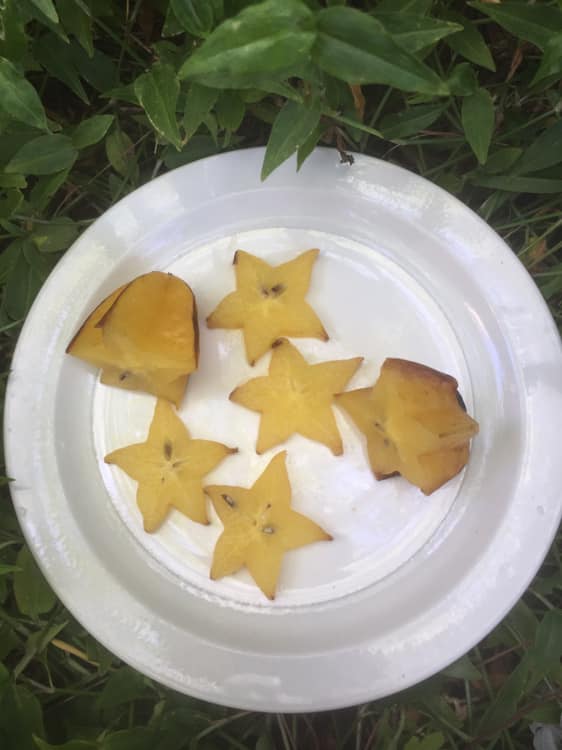Star fruit
Oxalidaceae
Star fruit: three stars for what is usually a three star fruit. Pictured also is Commelina cyanea, or scurvy weed. If you live in the same city a few years, it is inevitable that you will grow accustomed to the scenery. The things that used to make you laugh are no longer amusing. Look down the street. It is bin day, and the street is lined with bins of every spectrum. You remember years earlier, when the sight of these multilingual sulo bins – si! – was sufficient to bring you immense joy. Now, you only glimpse such joy. Perhaps you see a cat whose eyebrows look like a former politician, or you find a honker on the ground and give it a good, satisfying squeeze. Such events brighten your day. But – si! – some glimpses last longer than others. One day when you get off the bus, you see an A-frame advertising something or other. The advertisement depicts a woman wearing nothing but two pieces of star fruit, one on each eye. Such a glimpse of beauty and joy is reason enough for the existence of the star fruit.
The star fruit, also known as carambola, tastes like passiona. Passiona is a passionfruit inspired beverage. Neither passiona nor star fruit taste like passionfruit. The fruit itself is a bit insipid, but not so much to be a chore. It is edible. The seeds are covered in a strange sort of jelly that I found unappetising.

No progress today. My eldest nephew complained of a sickness in the lungs. He was weak. I advised him to stay in bed while Henry Erstwhile and I searched out medicaments.
Before we left, I checked our supplies. I gave the barrel of pickled plums a bit of a shake: not too many plums left. My eldest nephew’s barrel of orange juice sloshed satisfyingly: it was about half-full. Blotch had finished his barrel of melon pulp – leftovers from the melon raft. I made a mental note.
Henry and I left our little subterranean plot and went up to the surface. He directed me across the street. In just a few metres, the architecture changed considerably. In contrast to the immobile egg-carton whence we had come, this side of the street consisted mostly of the remains of Victorian townhouses, with several storefronts scattered here and there. Few of the glass fronts were in tact. The storefronts with foreign names – luxury brands from another age – had suffered the most vandalism. Peeking in to the atelier of Ecce Pecunia, I saw a poster depicting a pretty girl. The girl was naked, and her eyes had been covered with something. I blushed.
Further along, Henry stopped at a small side-alley to reach behind a wooden gate, which he unlatched. The alley was a tight passage that squeezed between two brick buildings, and the ground was covered in cardboard boxes and wooden pallets. We went down the alley, climbing over the pallets, until we came to a large black door labelled “apothecary”.